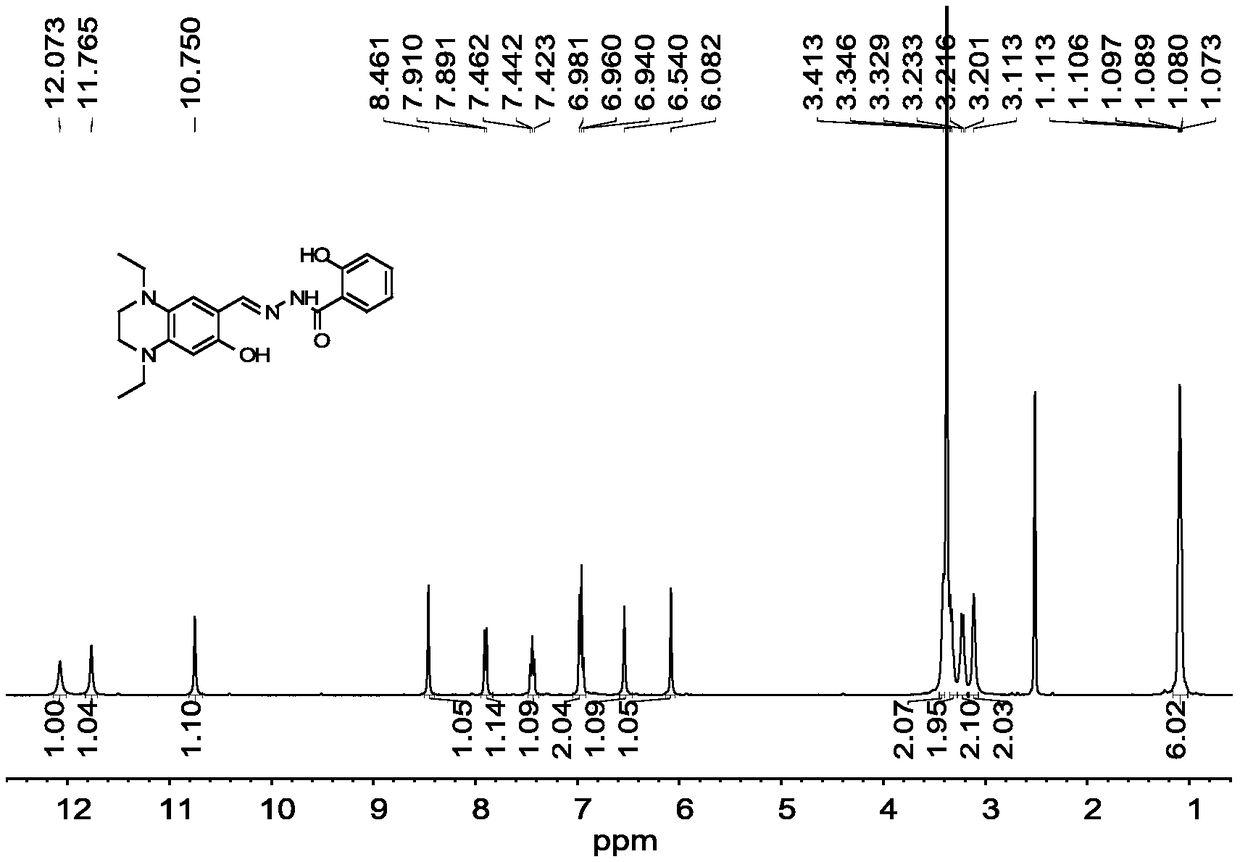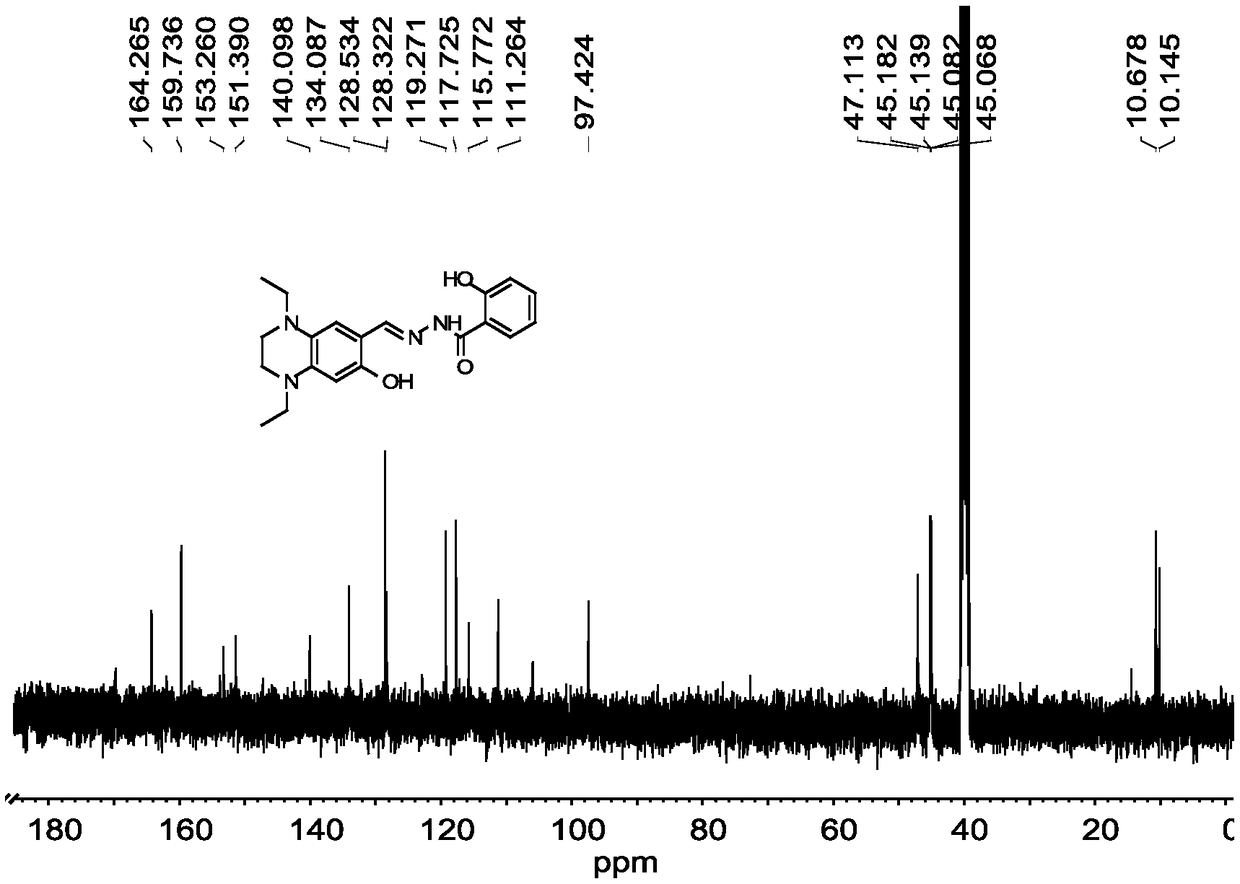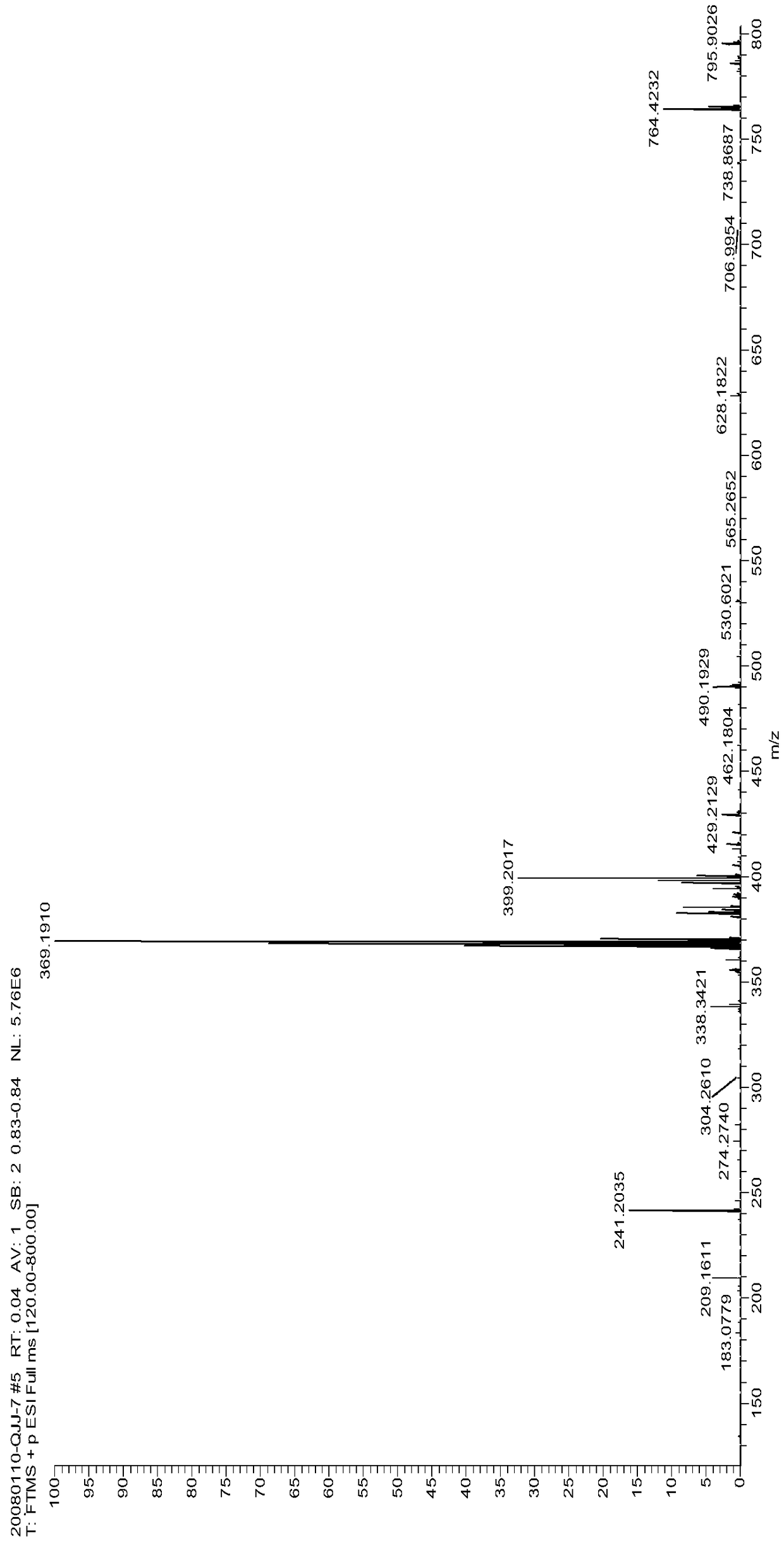Method for detecting aluminum ions in cells by long wave emission fluorescence imaging
A technology of fluorescence imaging and aluminum ions, applied in fluorescence/phosphorescence, measurement devices, material excitation analysis, etc., can solve the problems of poor cell permeability, photodamage of cells or living biological samples, short emission wavelength, etc., and achieve high selectivity, The separation and purification process is easy and the effect of good sensitivity
- Summary
- Abstract
- Description
- Claims
- Application Information
AI Technical Summary
Problems solved by technology
Method used
Image
Examples
Embodiment 1
[0032] Compound 1,4-diethyl-7-hydroxytetrahydroquinoxaline-6-carbaldehyde (234 mg, 1 mmol) and salicyl hydrazide (152 mg, 1 mmol) were dissolved in ethanol and refluxed for 8 h, cooled to room temperature, and a yellow color was precipitated The solid was purified by recrystallization from ethanol to obtain 237 mg of a yellow solid, which was the acceptor L, and the yield was 64.3%. Fluorescent Probe L 1 H NMR spectrum, 13 The C NMR spectrum and mass spectrum are shown in Figure 1-3 shown.
[0033] 1 H NMR (400MHz, DMSO-d 6 )δ12.07(s, 1H), 11.77(s, 1H), 10.75(s, 1H), 8.46(s, 1H), 7.90(d, J=7.7Hz, 1H), 7.44(t, J=7.6 Hz, 1H), 6.96(t, J=8.1Hz, 2H), 6.54(s, 1H), 6.08(s, 1H), 3.41(s, 2H), 3.34(d, J=7.0Hz, 2H), 3.27–3.17(m, 2H), 3.11(s, 2H), 1.09(td, J=6.6, 2.9Hz, 6H).
[0034] 13 C NMR (101MHz, DMSO-d 6)δ164.26,159.74,153.26,151.39,140.10,134.09,128.53,128.32,119.27,117.72,115.77,111.26,97.42,47.11,45.12,10.68,10.15.
[0035] HRMS(ESI + )calcd for C 20 H 24 N 4 O 3 ...
Embodiment 2
[0037] Compound 1,4-diethyl-7-hydroxytetrahydroquinoxaline-6-carbaldehyde (234 mg, 1 mmol) and salicyl hydrazide (304 mg, 2 mmol) were dissolved in ethanol and refluxed for 10 h, cooled to room temperature, and a yellow color was precipitated The solid was purified by recrystallization from ethanol to obtain 257 mg of red solid, which was the fluorescent probe L, and the yield was 69.8%. Fluorescent Probe L 1 H NMR spectrum, 13 The C NMR spectrum and mass spectrum are shown in Figure 1-3 shown.
Embodiment 3
[0039] Compound 1,4-diethyl-7-hydroxytetrahydroquinoxaline-6-carbaldehyde (234 mg, 1 mmol) and salicyl hydrazide (456 mg, 3 mmol) were dissolved in ethanol and refluxed for 12 h, cooled to room temperature, and a yellow color was precipitated The solid was purified by recrystallization from ethanol to obtain 267 mg of red solid, which was the acceptor L, and the yield was 72.5%. Fluorescent Probe L 1 H NMR spectrum, 13 The C NMR spectrum and mass spectrum are shown in Figure 1-3 shown.
[0040] Fluorescent probe L detects Al in cells 3+ :
[0041] Detection of trace amounts of Al in cells by long-wavelength emission fluorescence imaging 3+ When , firstly use 5 μmol / L-10 μmol / L fluorescent probe L solution (the solvent is PBS buffer) to incubate the cells to make the fluorescent probe L enter the active cells, and then mix the active cells with the fluorescent probe L with Al 3+ Incubate to make probes with Al 3+ Reacts in active cells to generate compounds that emit fl...
PUM
 Login to View More
Login to View More Abstract
Description
Claims
Application Information
 Login to View More
Login to View More - R&D
- Intellectual Property
- Life Sciences
- Materials
- Tech Scout
- Unparalleled Data Quality
- Higher Quality Content
- 60% Fewer Hallucinations
Browse by: Latest US Patents, China's latest patents, Technical Efficacy Thesaurus, Application Domain, Technology Topic, Popular Technical Reports.
© 2025 PatSnap. All rights reserved.Legal|Privacy policy|Modern Slavery Act Transparency Statement|Sitemap|About US| Contact US: help@patsnap.com



